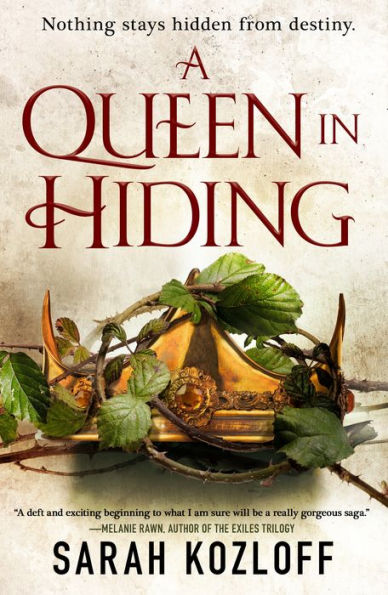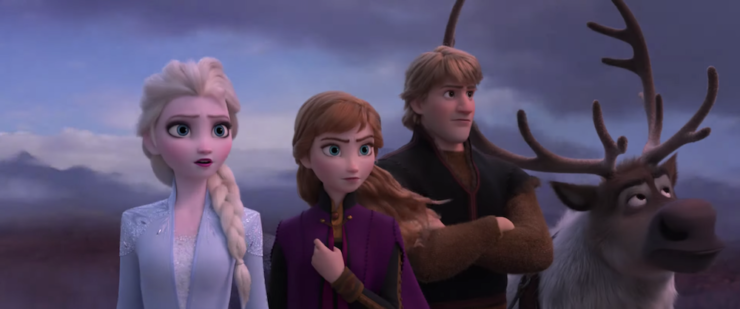Most Disney animated sequels provoke a cringing response. The Return of Jafar, The Lion King 2, The Little Mermaid II: Return to the Sea—they’re all sorry affairs, even if you’ve got a soft spot for them. And it’s hardly surprising either because Disney was never know for pumping money into any of its sequels, let alone creative power. But with a runaway success of Frozen, easily one of the most popular films of the past decade, Disney found a reason to give it a go.
[Spoilers for Frozen 2]
Frozen 2 is about history and colonialism and how to repair the past, but it’s a story informed by the present. Fans of the first film may remember that the opening chant paired with the title card was not a match with the rest of the film—it featured music of Scandinavian Indigenous Peoples, the Sámi, who were never shown or alluded to in the rest of the film. People noticed, and Disney was called out for appropriation of a culture they refused to portray on screen. For the sequel, Disney entered into an actual treaty with the Sámi people with regard to the use of their culture, and what steps the company would take to aid them in the preservation of said culture. While The Oceanic Trust was created for the purpose of making Moana, this agreement has less of an eye toward the collaborative end of that partnership, and more toward holding Disney accountable for their work.
While the success of that treaty is not for anyone outside the Sámi to determine, the result is a film that has the ability to educate young children—and parents, let’s be honest—on the effects of imperialism and erasure. Frozen 2’s entire plot arc centers around a treaty that went wrong and a dam built by Arendelle that has stifled nature’s magic. (This is the part where people who know a little history read the word “dam” and start grimacing because you know where this is headed.) While some might find that angle dour (it isn’t), it’s still a Disney movie—no atrocities are depicted on screen, and the ending is a neat process that wraps up in a bow of love and understanding. It’s not a perfect solution to the mistake Disney already made, and it’s notable that while this treaty is in play, none of the Northuldra characters (the fictional stand-ins for the Sámi people) are voiced by Indigenous peoples. There’s a long way to go on this type of collaboration, but it’s another step down a better path than the one Disney carved before.
The sequel might be even more of a musical than its predecessor, which is surprising but welcome. While none of the new numbers quite match the ear-worming spellpower of “Let It Go”, nothing really needs to, and all of the songs are better framed this time around; while Elsa’s original tour de force is dearly impressive, we saw very little of her leading up to it. This time around, each number has a distinct emotional crux within the story, making the music more essential to the overall narrative. There are plenty of meta asides and references with the music as well, particularly in Kristoff’s 80s-tastic music video ballad “Lost in the Woods”.
Buy the Book


A Queen in Hiding
Jennifer Lee’s second script comes together even more deftly than her first, with themes around growth, maturity, and love that make for a sharper second outing. Change improves most things, which is how Olaf—Anna and Elsa’s sentient snowman pal, played by Josh Gad—comes off far less grating and uncanny on this journey. (I genuinely disliked him on the first outing, but this time around he made me cry, so there you go.) Even the smallest touches in the script are worthy of celebration during key moments, like Elsa tying her hair back into a ponytail when she’s about to do something physically challenging, or the quiet ways in which the story brings Elsa and Anna’s mother to the fore and anchors her importance in their story. The small family that Elsa (Idina Menzel) and Anna (Kristen Bell) have made with Kristoff (Jonathan Groff), Olaf, and Sven is given the respect it deserves as well.
It makes for one of the strongest, yet underplayed, aspects of the film. While Anna’s love story with Kristoff is sidelined for the majority of the film, it’s also a pointed choice; Kristoff’s insecurities with their relationship is something that he works through on his own because he’s knows that the problem is his, not Anna’s. This may be the first time that a Disney princess film has ever centered a male character’s plot solely on how deeply he loves his partner, and how perplexing that intensity of emotion can be. When he comes to Anna’s aid, it’s with a maturity of heart that speaks volumes, as he utters perhaps the most romantic words in the English language: “I’m here. What do you need?”
But it’s the relationship between Elsa and Anna that gets the main focus, as it should, offering the sisters another chance to forge their own paths. While Elsa may not be afraid of hurting people with her powers anymore, she still has a problem—she’s very clearly not a people person, unlike her gregarious and endlessly energetic little sister. It’s exciting to see a version of this character trope that doesn’t rely on both women being “spunky” effervescent personalities. Anna’s brightness, her enjoyment of the outside world and everything in it isn’t reduced to a mere personality quirk, and Elsa doesn’t need to be outgoing in order to be a powerful hero. This is a boon for shy kids, a protagonist who cringes when she sees a glimmer of her past self belting out the words to “Let It Go”. Not everyone enjoys the spotlight. With Elsa and Anna, we get two loving sisters who learn to understand each other, and their place in the world, better.
With the end of Frozen 2, we see another story centered on the concept of what to do when it seems like failure and suffering are inevitable. The story’s answer is to keep going and do “the next right thing”. It’s hard to imagine a better message for kids or adults today, as the sheer tonnage of uncertainty can make action feel useless. Focusing on what can be accomplished—what you can manage, who will help you, how you take the next step forward—is more important now than grand planning and prophecy and magic. Those are the stories that will carry us through the coming years.
Frozen 2 is a lot like its progenitor, just with a double helping of heart, humor, and thoughtfulness. If Disney was going to come back to this well, I’m glad that this is the story we received.
Emmet Asher-Perrin would like to take this moment to personally thank the love of their life for always saying “I’m here. What do you need?” You can bug him on Twitter, and read more of her work here and elsewhere.










